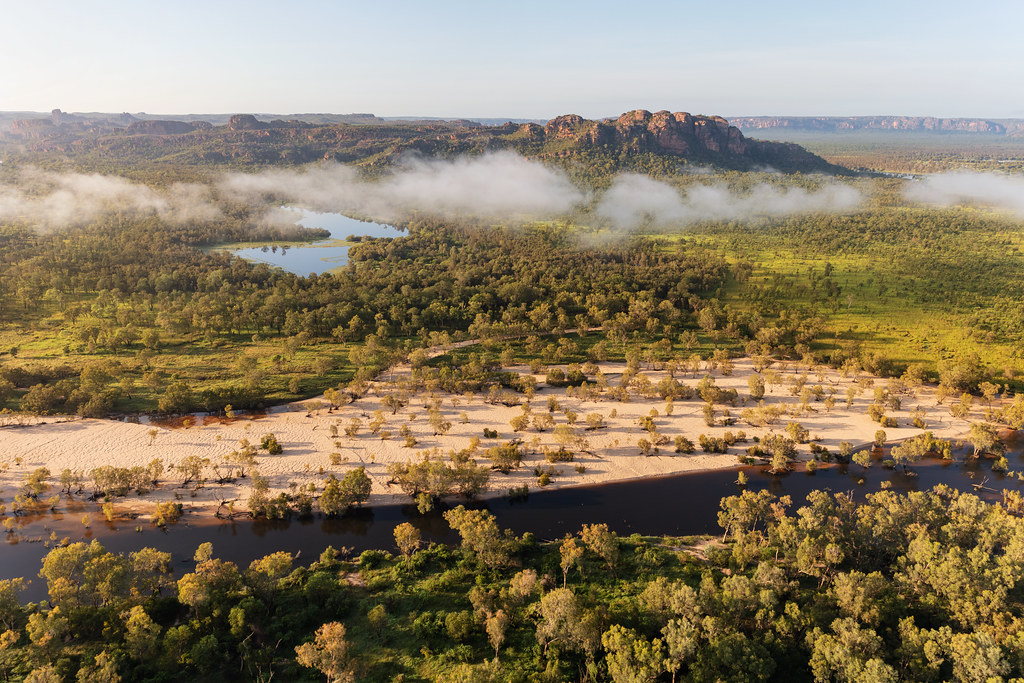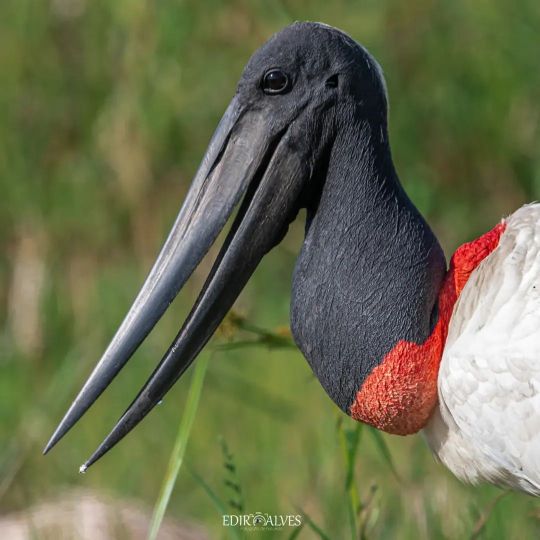#Jabiru
Text

Jabiru Stork (Jabiru mycteria) adult feeding its hideous children, family Ciconiidae, order Ciconiiformes, Mato Grosso, Brazil
photograph by Xavier Topakian
539 notes
·
View notes
Text
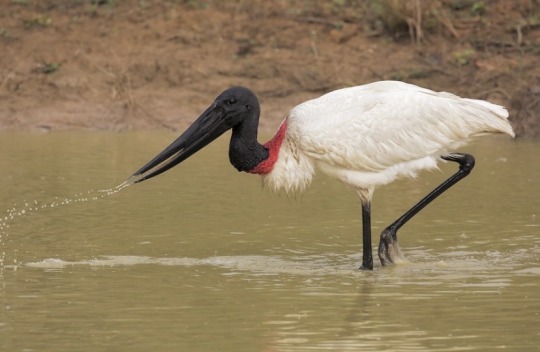

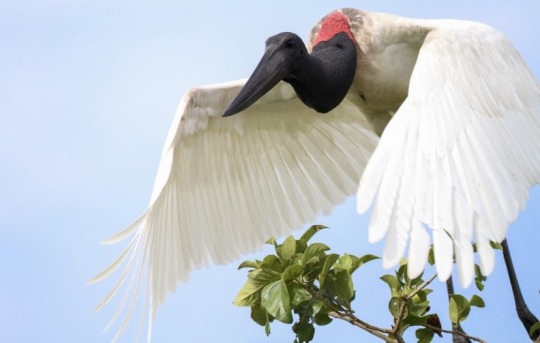



the jabiru is a large stork found from mexico to argentina; they are also semi frequently found as vagrants in the united states. their name comes from a tupi–guaraní language and means "swollen neck". the jabiru is the second-largest bird in south america, and the largest flying bird (they fall behind the flightless rhea in size). their wingspan is also the second largest on the continent, just behind the andean condor. while colorations and markings are the same between males and females, the species is easy to differentiate by sex; males are notably larger, up to 25% larger than females. this species feeds primarily on fish, frogs, insects, and other aquatic prey; however, they are opportunistic feeders, and will feed on carrion and even have been documented eating house mice. they can be helpful in the bodies of water they live in, as they will eat recently deceased fish, preventing them from contaminating the water. they feed mainly by tactile sensing, not by visually locating their prey; they will snap up prey from the water as soon as their bill brushes against it. the jabiru is believed to mate for life. jabiru build massive stick nests, which are reused for future clutches; however, it usually is several years after a successful breeding before jabiru will have another clutch of eggs. this is due to their young fledging at approximately 110 days, then sticking with their parents for around another three months. jabiru have been known to live until their mid-thirties.
5K notes
·
View notes
Text

Jabiru
550 notes
·
View notes
Photo




Some jungle animals I painted for Zoo Tycoon: The Board Game!
I will be posting some savannah animals I painted later!
Find me and my art elsewhere!
#zoo tycoon#zoo tycoon: the board game#animal art#wildlife art#bird art#deer#anteater#aixs deer#greater hornbill#jabiru#giant anteater#digital art#digital painting#artists on tumblr
157 notes
·
View notes
Text
BOTD: Jabiru
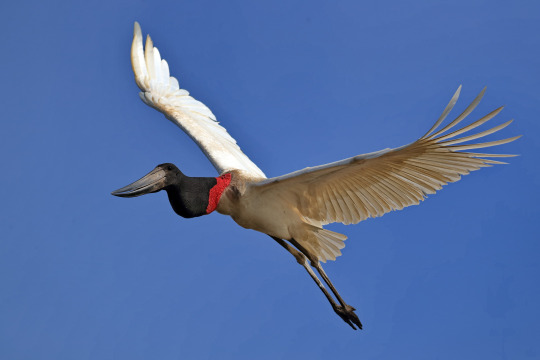
Photo: Paul Steeves
"This huge tropical stork is found mainly in South America. It is an uncommon breeder in southern Mexico, but wanderers have strayed as far north as Texas a few times, and one has reached Oklahoma. Occurrences north of the border have been in late summer or fall."
- Audubon Field Guide
#birds#jabiru#birds of north america#north american birds#jabiru stork#stork#storks#american birds#birds of america#waders#wading birds#birds of mexico#birds of central america#bird#bird watching#birdblr#birblr#Jabiru mycteria
63 notes
·
View notes
Text
Round 1, Match 3 - Eastern Bluebird vs. Jabiru



All propaganda is welcome in replies/reblogs!
8 notes
·
View notes
Text
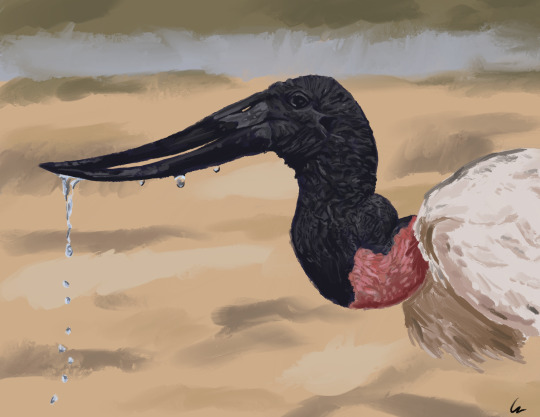
Study
17 notes
·
View notes
Text

Jabiru (Jabiru mycteria)
4 notes
·
View notes
Text
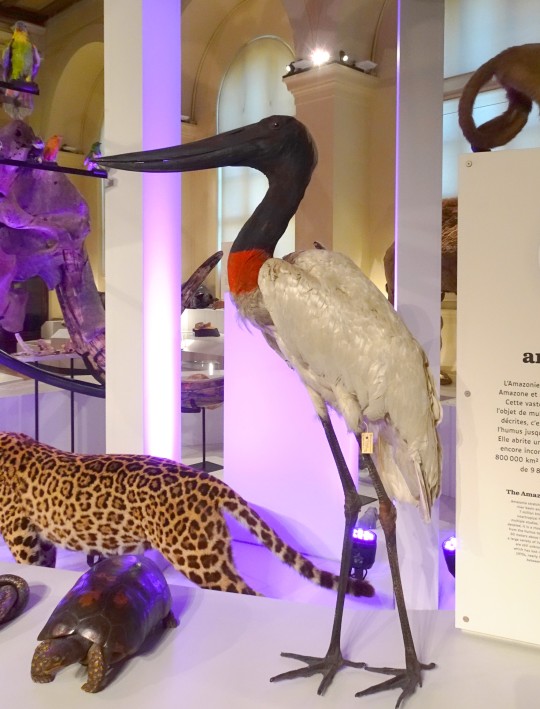




Marseille. Le Palais Longchamp abrite deux musées, ici le Muséum d'Histoire Naturelle. Quelques drôles d'oiseaux
jabiru
casoar
voir 1
Callistes tangaras ; au dessus, des papillons Morpho
Gypaète barbu (hélas photo ratée...)
#marseille#longchamp#palais longchamp#muséum d'histoire naturelle#taxidermie#oiseaux#ornithologie#jabiru#calliste#tangara#calliste tangara#casoar#ratites#gypaète#gypaète barbu#papillon#entomologie#morpho
3 notes
·
View notes
Text

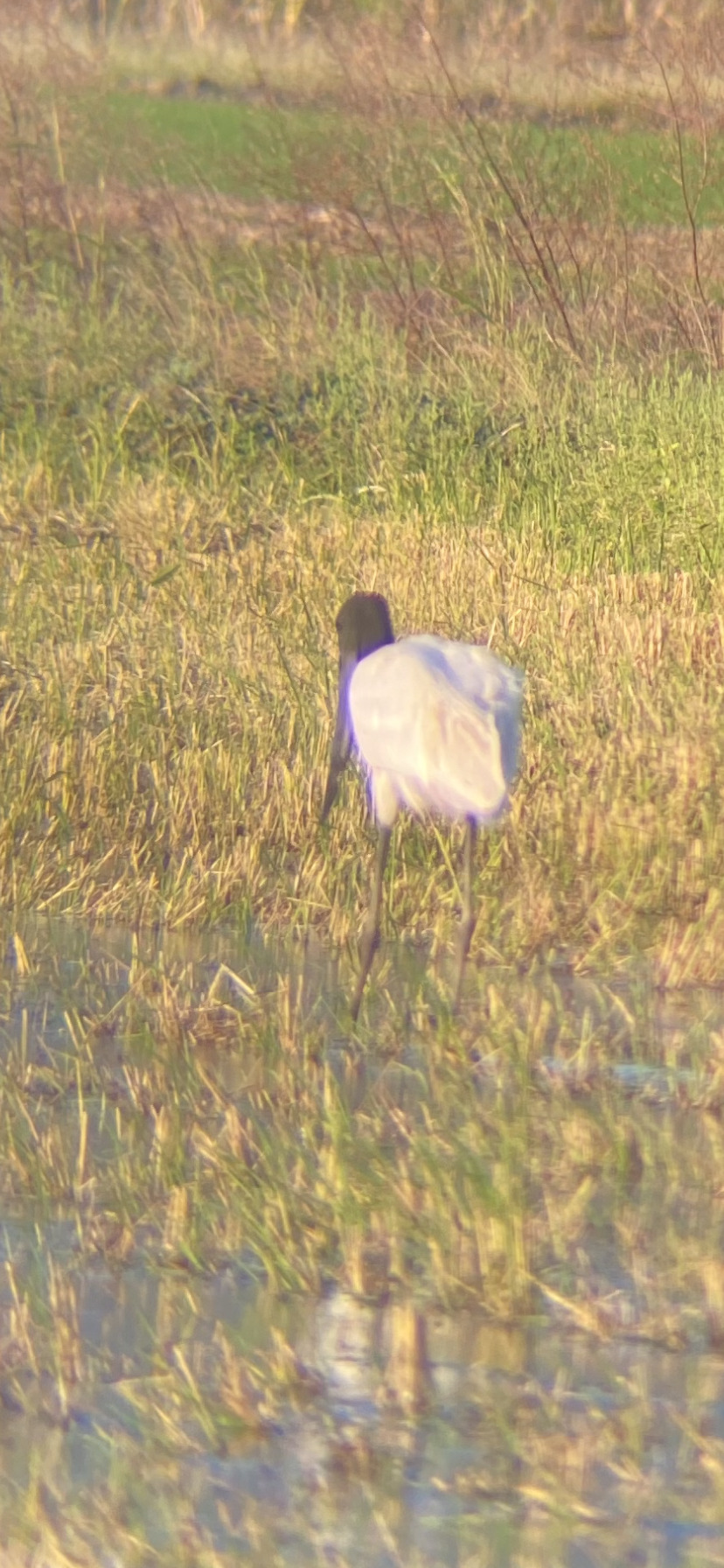
blurry scope pics of one of the jabiru we spotted in palo verde national park
10 notes
·
View notes
Photo



#birds#animals#nature#jabiru#jaburu#what do i even tag these posts#oliver.png#the second one is one of my photos ever#i still like the ones i got with this bird flying bc. woah. it was beautiful to see#and some of the photos turned out decent so askhdaksdkagdk#that was a fun day#btw this bird is huge. imagine something like 150cm
8 notes
·
View notes
Video
#Approved#kakadu#flight#helicopter#aerial#stone#country#outback#nt#northern#territory#jabiru#darwin#tourism#travel#explore#flickr
2 notes
·
View notes
Text
youtube
Costa meets a mother and son in Jessie Alderson and Ben Tyler who have created an abundant community kitchen garden in the heart of Kakadu, overflowing with indigenous and exotic fruits, vegetables and herbs. Subscribe 🔔 http://ab.co/GA-subscribe
The garden is at Murdudjurl, also known as Patonga homestead community, in the heart of Kakadu. About 50m south of Jabiru, it is on the way to Jim Jim falls, home to the Murumburr clan. The homestead was constructed as a game lodge in the 1950’s, and has since operated as a school and now a community home to a number of families.
The land here is diverse and abundant, having provided for the local people for tens of thousands of years. Ben says ‘the food we eat is reliant on the seasons. As the water recedes it is mostly plant-based foods we are collecting, chestnuts and lily seeds. The young geese are eating the wild rice; once they fatten up we will eat them!’
But as is common in many remote communities, the supply of fresh non-traditional foods is limited. Ben explains ‘it is really expensive, and really not at all fresh’. In 2014 Ben’s mum Jessie, a traditional owner and community leader, decided to start her own home-grown solution, a garden. Ben has been her right-hand man. ‘We are hoping that others in the community will get gardening, but at the moment it is really just me and mum’.
Their 30 x 15m plot is now filled with an astonishing array of productive plants, supplying fresh food to their own community and those beyond. Ben – ‘we started out with 3 bananas, now we have hundreds. The fruit gets sent all over Arnhem land!’ Tropical fruits, nuts, herbs and spices grow alongside some traditional native food plants, native lemongrass and many of the local apple species – pink, red and white fruited Syzygiums.
Given the garden is in the national park, all plants brought into the garden need to be approved. Ben – ‘there is an allowed plants list for new things but also others that need to be closely managed’. Rosellas are a weed in Kakadu, but have become a resource for many local weavers, with the calyx’ collected to provide vibrant red colour as well as food.
Ben says that despite the exotic location, they have some fairly standard challenges, lots of pests! ‘Lots of bugs in the wet season, they really stunt growth’ but in the dry season, it is fire! ‘One went through the garden a couple of weeks back!’
Ben, a fabulous cook who works at finding the balance between traditional and modern cooking, introduces Costa to some of his favourite indigenous ingredients found on the property. This includes the Cheeky Yam, the Green Tree Ant (Oecophylla smaragdina), and Water Lilies,
He says he is not a professional chef, ‘I sort of fell into cooking watching mum, and just being interested’. He is constantly trying to find the balance between traditional and modern cooking. ‘As soon as you add salt or sugar the flavours are changed, I often ask myself whether we should do that’.
#gardening australia#Australia#solarpunk#Jessie Alderson#Ben Tyler#garden#community kitchen#community kitchen garden#Kakadu#Murdudjurl#Jabiru#Jim Jim falls#Murumburr#Murumburr clan#community home#Youtube
3 notes
·
View notes
Text
Picture book: “Some Do, Some Don't” by Dipacho
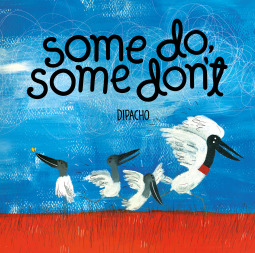
I am constantly expecting these birds to throw back their heads and yell “HECK!” because they just look so goofy. The artwork is the star here, for me, over the words. These birds just have so much personality. They’re not rendered as elegant, despite how they look in real life but they are endearing.
The text is much less about the jabiru bird (although there is some informational pages at the back of the book), and more about families and how people like to be together. Kids or no, married or no, gay, straight, neither, both. It’s just a little silliness and cuteness.
This is a good library pickup. I wouldn’t say it’s a must-buy for a household, but find out if your kid will fixate.
0 notes
Text
follando con una colombiana
Milf close up fuck Ryder Skye in Stepmother Sex Sessions
Best blowjobs come from the family
College girls hidden camera
Latina Pussy Play
Malaysian big and hard cock cum show
Que rico me masturbo pensando en una panochita muy rica
Back Shots
Tied up twink on the sex swing got his ass toyed and fucked
Omegle Latina Striptease Jerk Off
#outbleed#Halla#rufous-yellow#French-minded#party-colored#head-rail#Spaak#jabiru#kulaks#USL#schizopod#sarong#tectite#rootworm#matthewgraygubler#lassieish#coniine#re-revealation#Labyrinthici#centurist
0 notes
